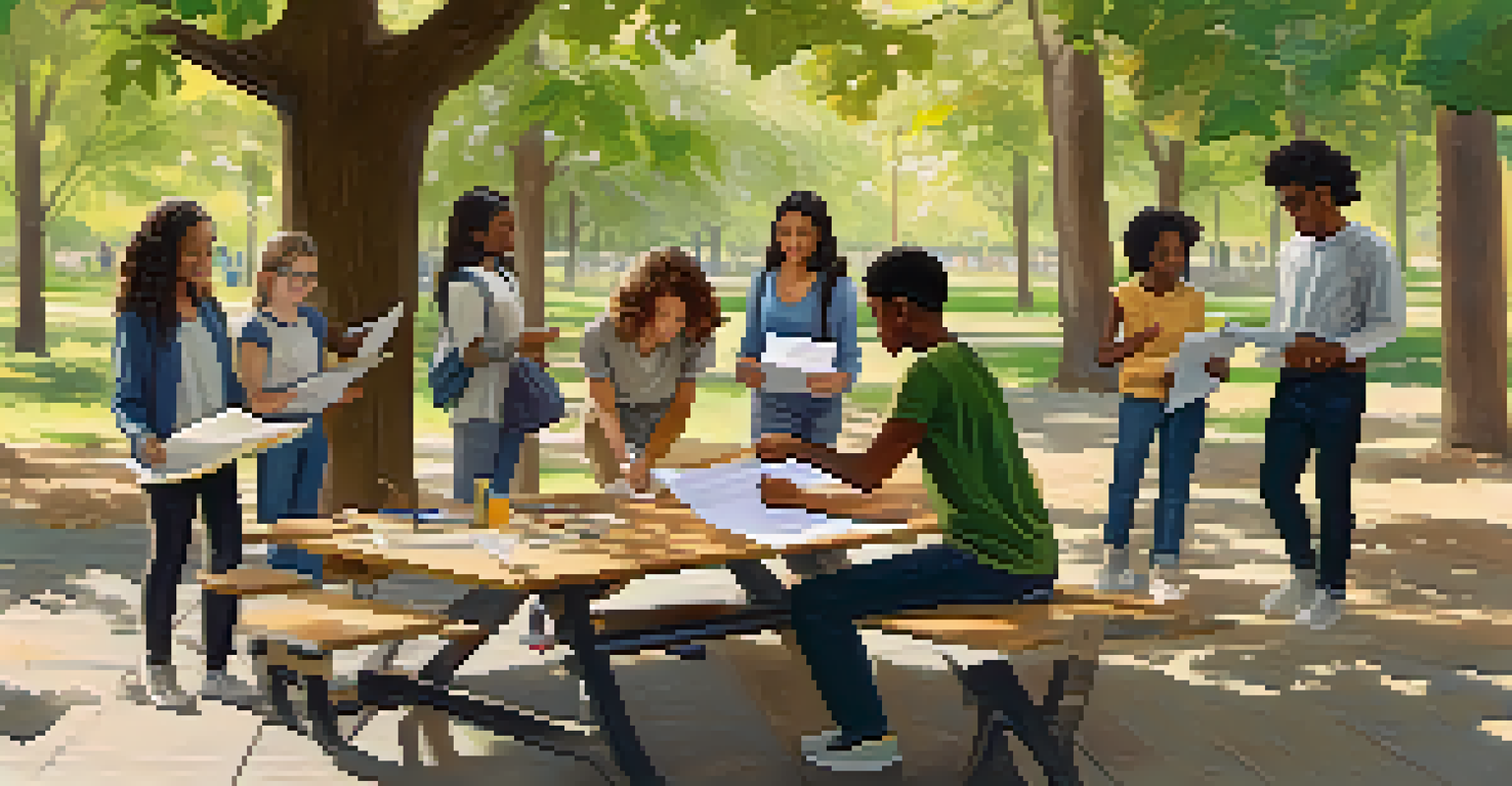The Benefits of Flipped Classrooms in Digital Learning

What is a Flipped Classroom in Digital Learning?
A flipped classroom is an innovative teaching model that reverses traditional learning. Instead of introducing new concepts in the classroom, students engage with instructional content at home, often through videos or online resources. This approach allows for more hands-on, interactive activities during class time, fostering a deeper understanding of the material.
The function of education is to teach one to think intensively and to think critically. Intelligence plus character—that is the goal of true education.
Think of it like preparing a meal: instead of cooking in front of guests, you provide them with a recipe to follow at home. When they arrive, you can all enjoy the meal together, discussing techniques and flavors. This model encourages students to take the initiative in their learning, making them more accountable for their education.
In digital learning, flipped classrooms leverage technology to create a more engaging and personalized experience. With resources easily accessible online, students can learn at their own pace, revisiting challenging concepts as needed.
Enhanced Engagement Through Active Learning
One of the most significant benefits of a flipped classroom is the increased engagement it fosters among students. By shifting the focus from passive listening to active participation, learners become more involved in their education. Class time can be dedicated to discussions, group projects, or problem-solving activities that reinforce the material learned at home.

Imagine a classroom buzzing with energy, where students are collaborating and sharing ideas rather than sitting silently. This active participation not only makes learning more enjoyable but also helps students retain information better. They develop critical thinking and communication skills that are essential for success.
Engagement through Active Learning
Flipped classrooms increase student engagement by promoting active participation during class time.
Moreover, when students come prepared to class, teachers can tailor their instruction to meet the needs of the group, addressing misconceptions and providing additional support where necessary. This dynamic creates a more inclusive learning environment.
Personalized Learning Opportunities for Students
Flipped classrooms allow for a more personalized learning experience, catering to diverse student needs. By providing access to instructional materials online, teachers can accommodate different learning styles and paces. Students who grasp concepts quickly can move ahead, while those needing extra time can revisit lessons at their own convenience.
Education is not the filling of a pail, but the lighting of a fire.
Think of it like choosing your own adventure book: you can choose the path that suits you best. This flexibility is particularly beneficial in a digital learning context, where resources are readily available and easily accessible.
Additionally, personalized learning encourages students to take ownership of their education, fostering a sense of independence and self-motivation. They learn to set goals and track their progress, which can lead to improved academic outcomes.
Improved Teacher-Student Interaction
With the traditional model, teachers often find themselves overwhelmed by content delivery, leaving little room for meaningful interaction with students. In a flipped classroom, however, the focus shifts to building relationships and engaging with learners on a deeper level. Teachers can spend more time providing feedback, answering questions, and mentoring students.
Picture a scenario where teachers are able to facilitate discussions and guide group activities rather than simply lecturing. This creates a collaborative atmosphere where students feel comfortable expressing their thoughts and asking for help. It also allows teachers to better understand their students' strengths and weaknesses.
Personalized Learning Experience
This model caters to diverse learning styles, allowing students to learn at their own pace.
Ultimately, this enhanced interaction fosters a supportive learning environment that can lead to increased student motivation and success. When students feel valued and understood, they are more likely to engage actively in their learning.
Encouraging a Collaborative Learning Culture
Flipped classrooms naturally promote collaboration among students, as class time is often dedicated to teamwork and group projects. This collaborative culture is vital for developing social skills and learning how to work effectively with others. Students benefit from sharing diverse perspectives and tackling challenges together.
Imagine a project where students from different backgrounds come together to solve a real-world problem. They learn not only from the content but also from each other's experiences and insights. This type of learning mimics real-life scenarios, preparing students for future collaborative endeavors in their careers.
Moreover, working in groups fosters accountability, as students rely on one another to contribute to the project’s success. This sense of shared responsibility can enhance motivation and commitment to the learning process.
Utilizing Technology to Enhance Learning Experiences
Technology plays a crucial role in the flipped classroom model, providing students with access to a wealth of resources and tools. From interactive videos to online quizzes, digital platforms offer diverse ways for students to engage with content. This integration of technology not only makes learning more accessible but also more exciting.
Think of technology as a toolbox: it provides various tools to approach learning challenges creatively. With the right tools, students can experiment, collaborate, and explore concepts in ways that traditional methods might not allow.
Enhanced Teacher-Student Interaction
Flipped classrooms foster meaningful interactions, enabling teachers to mentor and provide feedback more effectively.
Additionally, technology enables teachers to track student progress and adapt their instruction accordingly. They can analyze data on student performance and engagement, leading to more informed teaching strategies that cater to individual needs.
Challenges and Considerations in Implementing Flipped Classrooms
While flipped classrooms offer numerous benefits, they are not without challenges. One significant hurdle is ensuring that all students have access to the necessary technology and internet connectivity at home. This digital divide can hinder the effectiveness of the flipped model, particularly in underserved communities.
Consider the implications of assigning homework in a digital format: if some students can't access the materials, they miss out on vital learning opportunities. Therefore, educators must be proactive in addressing these disparities to create an inclusive environment.

Furthermore, teachers need to invest time in developing high-quality instructional materials and training to effectively facilitate a flipped classroom. This transition requires careful planning and ongoing support to ensure that both teachers and students thrive in this new learning model.